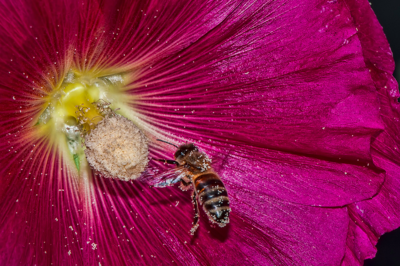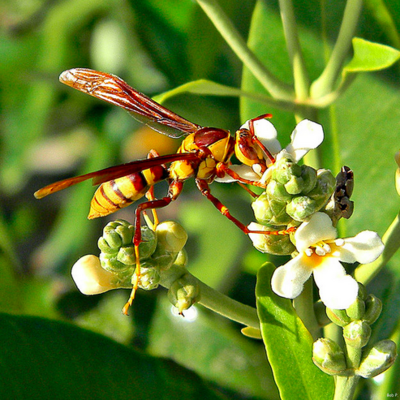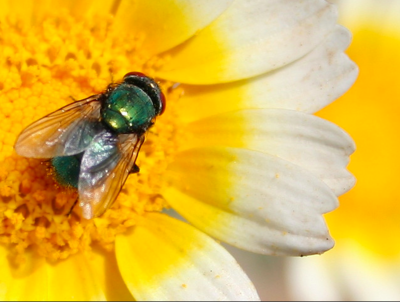Insect pollinators

Insect pollinators refers to the insects that have a primary role of pollinating the more than two-thirds of the world's plant species that require pollination for fertilisation.
List of insect pollinators[edit | edit source]
The following list details the key insect pollinators:
- Bees
- Wasps
- Flies
- Butterflies
- Some beetles.
In addition to insects, there are certain birds, bats, small mammals and even people on occasion, who have a role in assisting pollination.
Bees[edit | edit source]

Bees are responsible for the majority of pollinating in gardens, of crops and in all relevant natural settings.
Different flowers, crops and natural areas attract different kinds of bees.
- Australian native bees (see https://en.wikipedia.org/wiki/Australian_native_bees)
- Bumblebees (Bombus spp.)
- European honey bees (Apis mellifera)
- Leafcutter bees (Megachile spp.)
- Long-horned bees
- Squash bees
- Sweat bees
Wasps[edit | edit source]

Adult wasps obtain nectar from shallow flowers with nectar that is easily obtained.
- European paper wasp (aggressive, social)
- German yellowjacket (aggressive, social)
- The solitary, gentle varieties
Flies[edit | edit source]

As with wasps, flies tend to like the shallow flowers with easily accessible nectar.
- Bluebottle flies
- Hover flies
- Tachinid flies (pest controllers as well)
Butterflies[edit | edit source]

Butterflies like the large and showy flowers and require nectar, not pollen.
Beetles[edit | edit source]
Zone for filling in needed info!